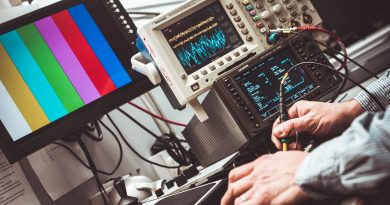Oscilloscope Calibration
An oscilloscope is an invaluable tool for your electronics workbench. If you invest in a digital storage oscilloscope, you’ll need to verify the settings of several key controls before you take any measurements. The steps you must follow when calibrating an oscilloscope depend on the make and model, so consult the instruction manual. Nevertheless, let’s have a look at the general steps for calibrating an oscilloscope.
First set your oscilloscope’s controls to their normal positions. On most oscilloscopes the rotating dials will be centered, pushbuttons will be out, and all slide and paddle switches will be up. Plug in your oscilloscope and turn it on. (If it has a CRT display you may need to give it a couple minutes to warm up.)
Next you’ll set the VOLTS/DIV control to one, which will cause your oscilloscope to display one volt per vertical division. You may have to adjust this setting, depending on the type of signal displayed, but one volt is a good setting to start with. Set the TIME/DIV, which determines the time interval for each of the display’s horizontal divisions, to one millisecond. Turn the dial to its slowest setting and then turn the dial one notch at a time while waiting for the dot to transform into a solid line. After that you should set the Trigger switch to automatic; the automatic position allows the oscilloscope to stabilize the trace on a trigger point within the waveform; if it isn’t set to automatic, the waveform can drift across the display, making it difficult to observe.
The next step is to connect the digital oscilloscope probe to the input connector (if you have more than one input connector use the one labelled “A”). Oscilloscope probes have a probe point that you connect to the input signal and a different ground lead. The ground lead typically has an alligator clip and can be connected to any one of the circuit’s common ground points while testing. The ground lead is sometimes detachable, meaning you can remove it when you don’t need it.
The last step is to touch the end of the oscilloscope probe to the calibration terminal, which provides a sample square wave for calibrating the oscilloscope’s display. Some oscilloscopes have two calibration terminals (point two and two volts); touch the probe to the two volt terminal if your model has two terminals. You should use an alligator test probe when calibrating your oscilloscope. You can also push the tip through the hole in the end of the calibration terminal to hold the probe in place, if your oscilloscope probe has a pointy tip.
